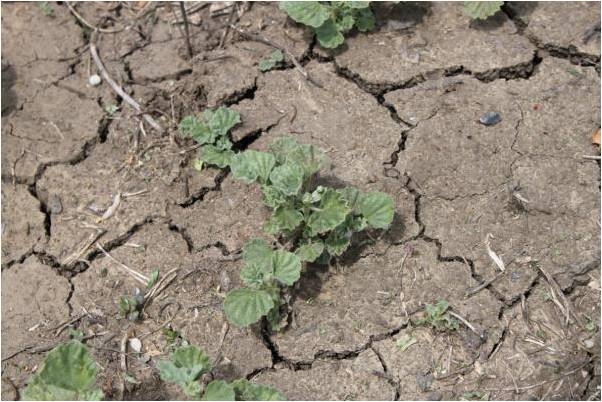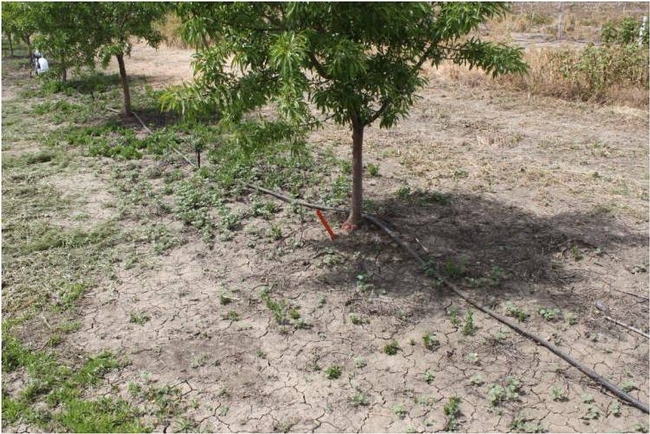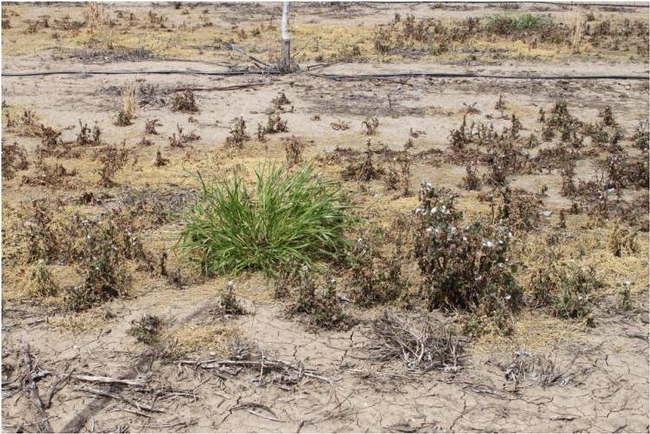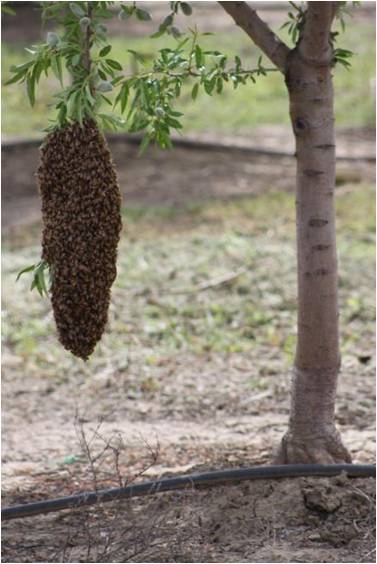I visited a couple of almond orchard trials this week and thought I'd share a few photos.
First, I ran across a weed that I haven't encountered before - alkali mallow (Malvella leprosa). This weed is also known as: alkali sida, creeping mallow, dollar weed, ivy-leaf sida, star mallow, white mallow, and whiteweed.
When I first saw the weed emerging in these plots, I thought it was one of the annual mallows commonly found in orchards such as common mallow, bull mallow, little mallow or high mallow (Malva neglecta, M nicaeensis, M. parviflora, and M. sylvestris, respectively). In contrast to those more familiar weeds, alkali mallow is a perennial plant that has a deep and extensive system of creeping roots. Like field bindweed and other creeping perennial weeds, alkali mallow forms colonies and can be spread through movement of seed or vegetative fragments. Also like other perennial weeds, this weed may take some diligence to control effectively through either repeated cultivation or through systemic herbicides.

In the photo below, the foreground was treated in January with a combination of Treevix, Prowl H2O, and Matrix while the next plot was treated with Treevix and Gramoxone (no residual activity). Of course, since the alkali mallow was not emerged at that time, the Treevix/Gramoxone had no activity. The Matrix and Prowl seemed to have stunted the alkali mallow but I doubt that the control will hold for long now that the plants are really starting to grow.

Next, I have a photo of glyphosate-resistant ryegrass in a walnut orchard. This of course is not new to many orchard and vineyard growers in the Sacramento Valley but I thought it was a good opportunity to talk about two issues. First, to be most effective, herbicide applications need to include the right herbicide, and the right rate, applied at the right time. If this grower had been targeting glyphosate resistant ryegrass, he would not have used this particular application of glyphosate and Goal (he was after annual mallows as well as the sowthistle and swinecress, etc). The second point is FOLLOW UP and evaluate your weed control efficacy - this field does not have a lot of ryegrass currently and, if the grower uses spot treatments or mechanical means to control these few surviving ryegrass plants, he may minimize his future problems with GR ryegrass.

Finally, this almond orchard still had a few bee hives around and a couple of the colonies swarmed and set up shop in nearby trees. Although this is pretty much completely unrelated to weeds, I thought it was interesting. Plus, I justified purchasing my zoom lens (safety first, right?)!

Take care,
Brad